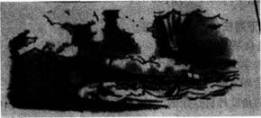设计任务:请阅读下面学生信息和语言素材,设计一节课的教学方案。教案没有固定格?
式.但须包含下列要点:?
teaching objectives
teaching contents
key and difficult points
major steps and time allocation
activities and iustifications
教学时间:45分钟?
学生概况:某城镇普通中学高一年级第一学期学生,班级人数40人。多数学生达到《普通高中英语课程标准(实验)》五级水平。学生课堂参与度一般。
语言素材:?
Pompeii: The facts
August 24, in the year AD 79, began normally for the people in Pompeii, a town at the foot of Mount Vesuvius. Farmers went out to their fields, shopkeepers set out their goods for sale,craftspeople opened their workshops and the rich walked to the public baths while their servants cleaned their houses and washed their clothes. Unfortunately, the end of the day was far from normal for the 20,000 citizens of Pompeii.
Early in the afternoon, when many people were resting from the heat of the day, Mount
Vesuvius erupted. Millions of tonnes of ash, lava and pumice poured onto the surrounding hillside and over the town of Pompeii and other towns and villages. By evening Pompeii was buried under 3-5 meters of ash and mud, and at least 2,000 men, women and children were buried with their town.
正确答案及解析
正确答案
解析
Class Type: Comprehensive class, 1 period
Teaching Contents: This lesson contains some new words and descriptions of volcano eruption. It will enlarge students' vocabulary of natural phenomenon and help them learn to express the past actions.
Teaching Objectives:
(1) Knowledge objective
Students can master the words of volcano eruptions, such as"erupt, ash, lava, pumice, mud".
(2) Ability objective
Students can develop ability in describing natural disasters and past actions.
(3) Emotional objective
Students can speak confidently in front of the class.
Teaching Key Points:
Name words of volcano eruptions; description of the eruption ; usage of "erupt".
Teaching Difficult Points:
Memorization of the news words; how to get the students volunteer actively in interactive sections.
Teaching Aids:
Multi-media, pictures of different nature disasters, cards of key words about volcano eruptions.
Teaching Procedures:
Step 1 Lead-in (5 minutes)
Show students pictures of different natural disasters and some historical facts of them.
Then show the students pictures of Pompeii and tell a short story about Pompeii.
(Justification: This step will warm up the class, and students will become quite curious and be attracted by Pompeii' s mysteries. )
Step 2 Presentation (20 minutes)
a. New Words
Divide the students into 4 groups and give each group cards with natural disasters on it. The teacher shall write all the vocabulary related to nature disasters on the blackboard and ask students to match descriptions with the disasters. (5 minutes)
(Justification: This group activity helps attract students' attention and interest. They can grasp the meaning of new words faster. )
b. Speech
Keep the 4 groups and each group will be given 5 minutes to prepare for a 2 minutes description of volcano erupt/on, then they shall select one group member to present it in front of the class.
(Justification: This group activity helps students memorize all the words and develp the ability of doing presentation in front of the class.)
Step 3 Consolidation (15 minutes)
Call 4-6 students evaluate the presentations made by each group with questions like:
What do you think of the group A's presentation
Is there any more vocabulary we have learned today can be used in that presentation
What improvements do you think they need
(Justification: This step will help students memorize the vocabularies. What's more, it will help train students'critical thinking. )
Step 4 Summary and Homework (5 minutes)
The teacher will show the flash cards of words & sentences to lead students to read and review them again.
The homework is to write at least 10 sentences to describe a nature disaster.
(Justification: The homework of writing will help students to use the words to describe nature disasters, and strengthen their interest and confidence of learning English. )
Blackboard Design:
Pompeii: The facts
Word:
erupt ash lava pumice mud
Speech:
The description of volcano eruption
Teaching Reflection.
包含此试题的试卷
你可能感兴趣的试题
教师职业道德区别于其他职业道德的显著标志就是( )。
-
- A.为人师表
- B.清正廉洁
- C.敬业爱业
- D.团结协作
- 查看答案
在教育史上主张“不愤不启,不悱不发”的教育家是()。
-
- A.孔子
- B.孟子
- C.荀子
- D.韩非子
- 查看答案
心理学家所说的“危险期”或“心理断乳期”是指( )。
-
- A.童年期
- B.少年期
- C.青年期
- D.成年期
- 查看答案
教育工作中做到“因材施教”、“长善救失”符合年轻一代身心发展的( )。
-
- A.顺序性
- B.个别差异性
- C.不平衡性
- D.互补性
- 查看答案
德育过程与品德形成过程的关系是( )。
-
- A.是一致的,可以等同
- B.教育与发展的关系
- C.相互促进的关系
- D.相互包容的关系
- 查看答案